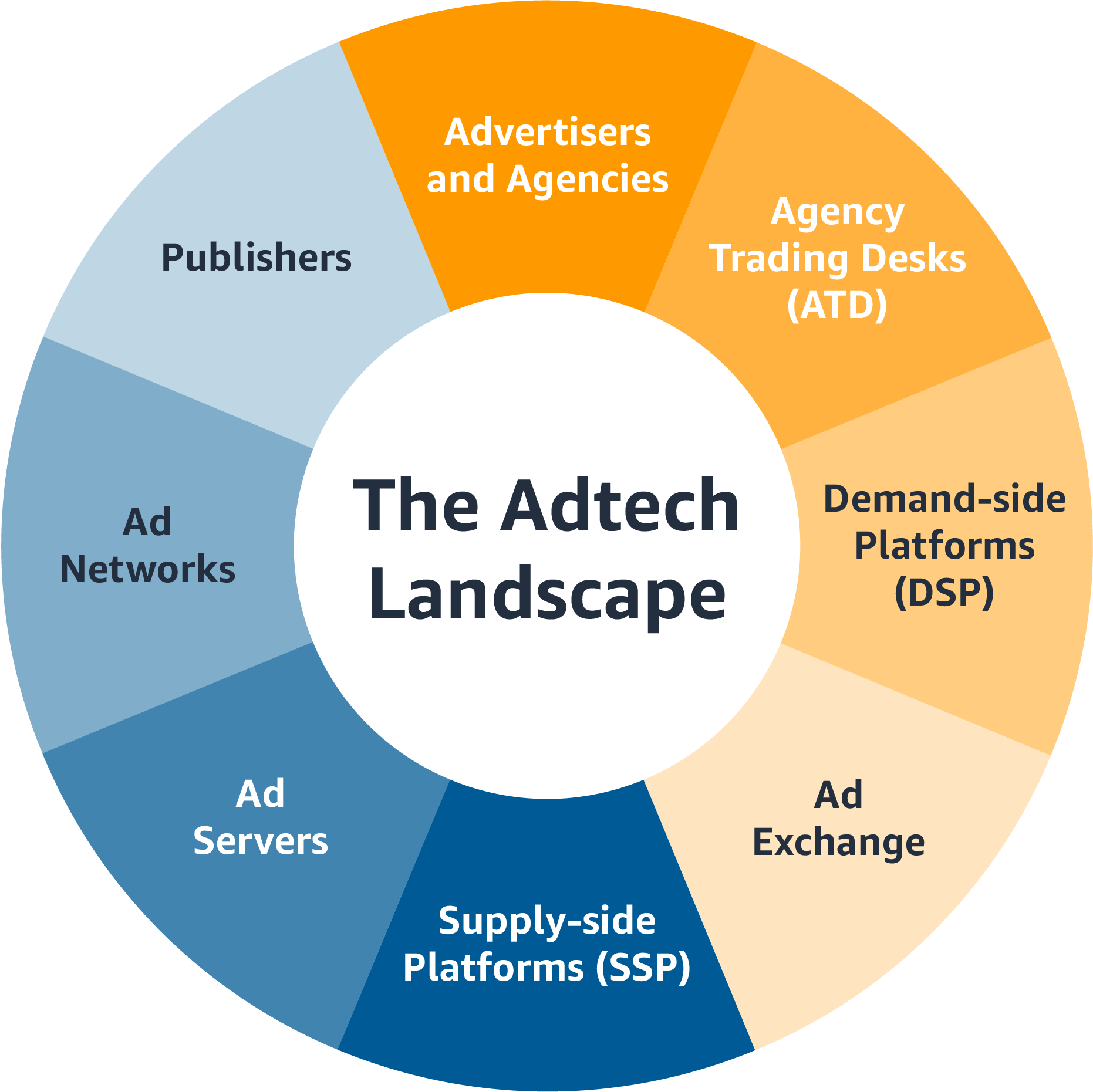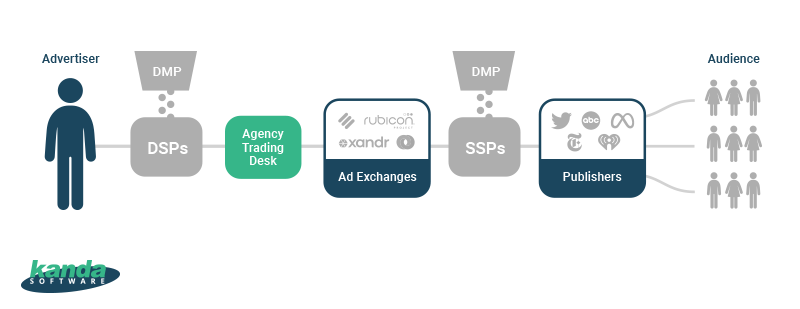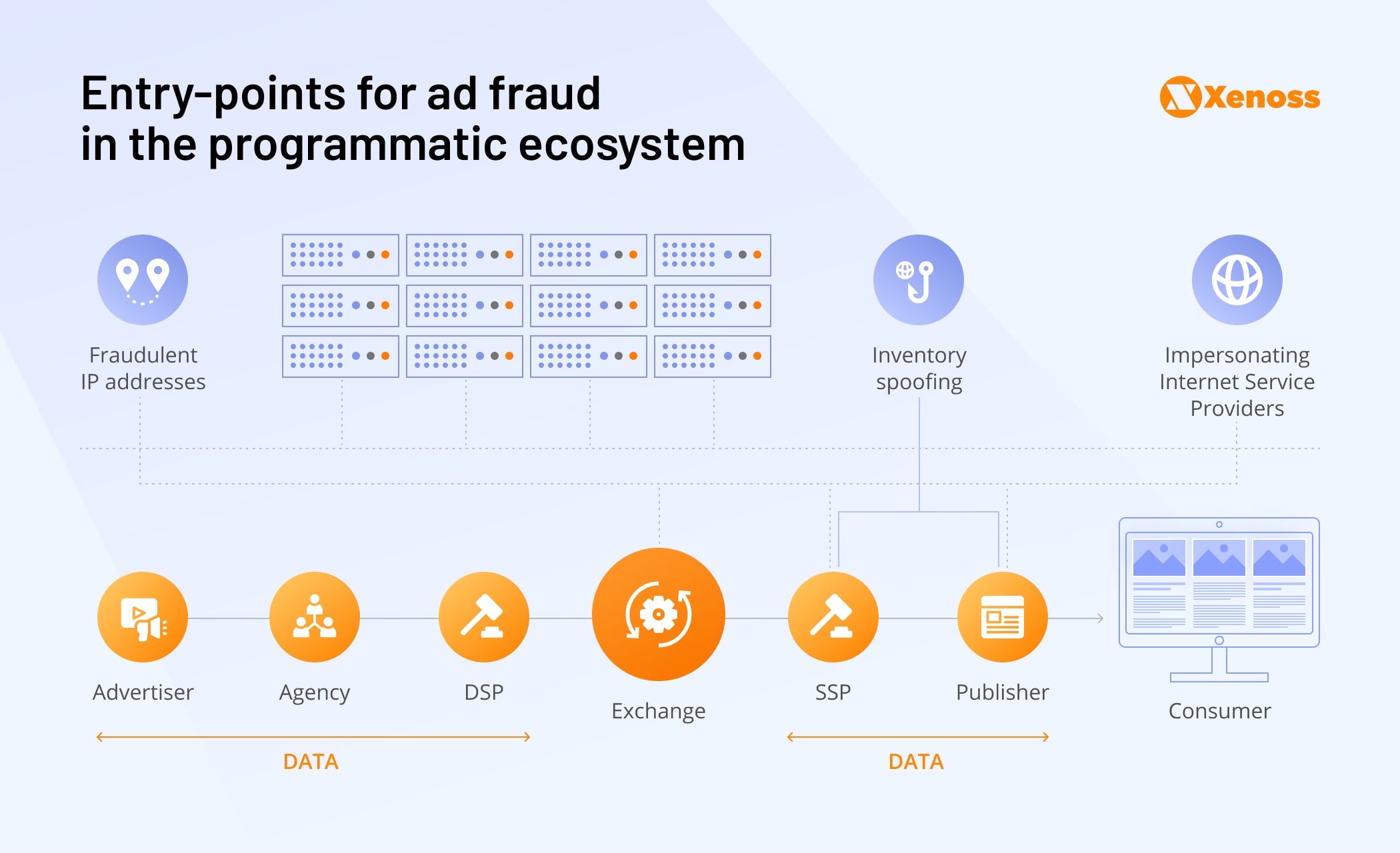We use cookies to enhance your browsing experience, serve personalized ads or content, and analyze our traffic. By clicking "Accept All", you consent to our use of cookies.

In today’s competitive world, companies are trying to keep up with the changing digital landscape and evolving customer habits. To increase their share of the market and drive consistent growth, businesses invest in marketing and advertising.
Advertising technology has emerged to offer better analytics to advertisers and help them deliver more tailored advertisements and media to the consumer — all while improving the digital advertising ROI. The global adtech market is expected to reach $45.61 billion by 2028 growing at the CAGR of 5.46%.
Adtech, short for advertising technology, is a general term that commonly refers to the tools and software used by advertisers to execute their digital advertising strategies and connect with target audiences. As the process of buying and selling ads is becoming more complex, businesses invest in adtech software development to streamline inventory management, optimize ad campaigns, and maximize ad revenue.
The adtech ecosystem is complex and fragmented with many moving parts, the main components include:

Source: Amazon Ads
The pinnacle of adtech is programmatic advertising, i.e. the process of automated buying and selling ad space. Given its efficiency, programmatic advertising has become a preferred way of running ad campaigns. According to Statista, programmatic advertising will reach $725 billion by 2026.
Programmatic advertising typically involves a few advertising and tech players – publishers with supply-side platforms (SSPs), advertisers with demand-side platforms (DSPs), data management platforms (DMPs) and ad exchanges who facilitate the real-time bidding (RTB) for the ad space available. Depending on the chosen deal and the type of ad delivery, there two main forms of programmatic advertising:
Programmatic direct is a form of advertising that aims to digitally replicate the traditional one-on-one media buying process. This is an ad transaction that takes place directly between a publisher and an advertiser, eliminating the need for any ad exchange.
Unlike Programmatic Direct, RTB involves three parties — a publisher, an advertiser, and an ad exchange. This is an auction-driven process where ad inventory is purchased automatically in real time on open auctions or private marketplaces. RTB is becoming the go-to strategy for more and more advertisers who want to optimize.

The quote “You can’t improve what you don’t measure” is fundamental not only to business management but to advertising as well. Only by knowing where ads are placed and how they perform, advertisers can make the necessary optimizations to their strategies.
Data-driven adtech solutions provide advertisers with a 360-degree view of their advertising campaigns on social media, email, search and display networks. Armed with these insights, brands can ensure that your ads are reaching the intended audiences and garnering the maximum interactions and impressions from the consumer.
Today, the “one-ad-fits-all” approach is no longer effective and modern advertisers know that personalization is one of the key success drivers of advertising success.
As companies engage with consumers across a vast array of apps, social media platforms, websites, and more, machine learning-powered adtech solutions can track consumer habits and preferences, evaluate clickthrough data and provide insights into customers’ motives. With this level of customer intelligence, businesses can further segment their audiences on a more granular level and tailor ads specifically to the demographics they are targeting.
Adtech solutions also make it easy to test the creative elements of advertisements, like colors, imagery, and verbiage, in order to understand what connects with customers the most and then to optimize ad inventory accordingly.

The enactment of GDPR has made advertisers re-evaluate the use of third-party data for the purpose of ad targeting and find more privacy-friendly alternatives, which brought contextual advertising back on everyone’s radar.
Contextual advertising refers to placing the most relevant ads in the most appropriate settings. ML-powered adtech solutions can take contextual advertising to the next level by analyzing page content and extracting meaning from text to find the optimal place for ad insertion.
One of the biggest challenges that advertisers have to face is ad fraud. With the advent of ad exchanges and real-time bidding, the media buying process became truly global but at the same time it gave access to multi-billion ad budgets to thousands of players, including fraudsters. In 2022, the digital ad fraud is estimated to reach eye-watering $44 billion, accounting for 45% of the total ad spend.
Digital ad fraud is the practice of using bots or malware by bad actors to generate fake interactions — clicks, views, impressions, conversions — in order to gain revenue directly or indirectly. Since the programmatic chain has many moving parts, for fraudsters it means multiple vectors of attack.

Source: Xenoss
To fight back and protect their ad spend, companies expand their adtech stack with ad fraud detection tools that can outsmart sophisticated fraudulent schemes and detect key types of ad fraud like click spamming, click injection, device farms, and SDK spoofing. By leveraging machine learning technologies, these tools can provide creative and website assessment, evaluate brand safety score, analyze activity in real time, identify and stop invalid traffic.
And last but not least, adtech solutions make inventory management and ad placement more controllable by helping advertisers make sure that advertisements reach engaged customers that may be interested in their services or products. By getting ads to users at critical touchpoints, brands can significantly reduce wasted efforts and allocate their advertising budgets more effectively as compared to the traditional media buying and selling process.
From the first clunky banner ads, advertising technology has come a long way and has evolved into a sophisticated ecosystem with multiple players and multi-billion ad budgets. Today, adtech solutions are vital to businesses that want to maximize their advertising potential and reach customers more effectively. With multiple successful adtech projects under the belt, Kanda helps startups and leading media enterprises develop adtech solutions that meet their unique business needs, whether it is to simplify ad management, optimize ad inventory, or measure campaign performance across multiple channels.



